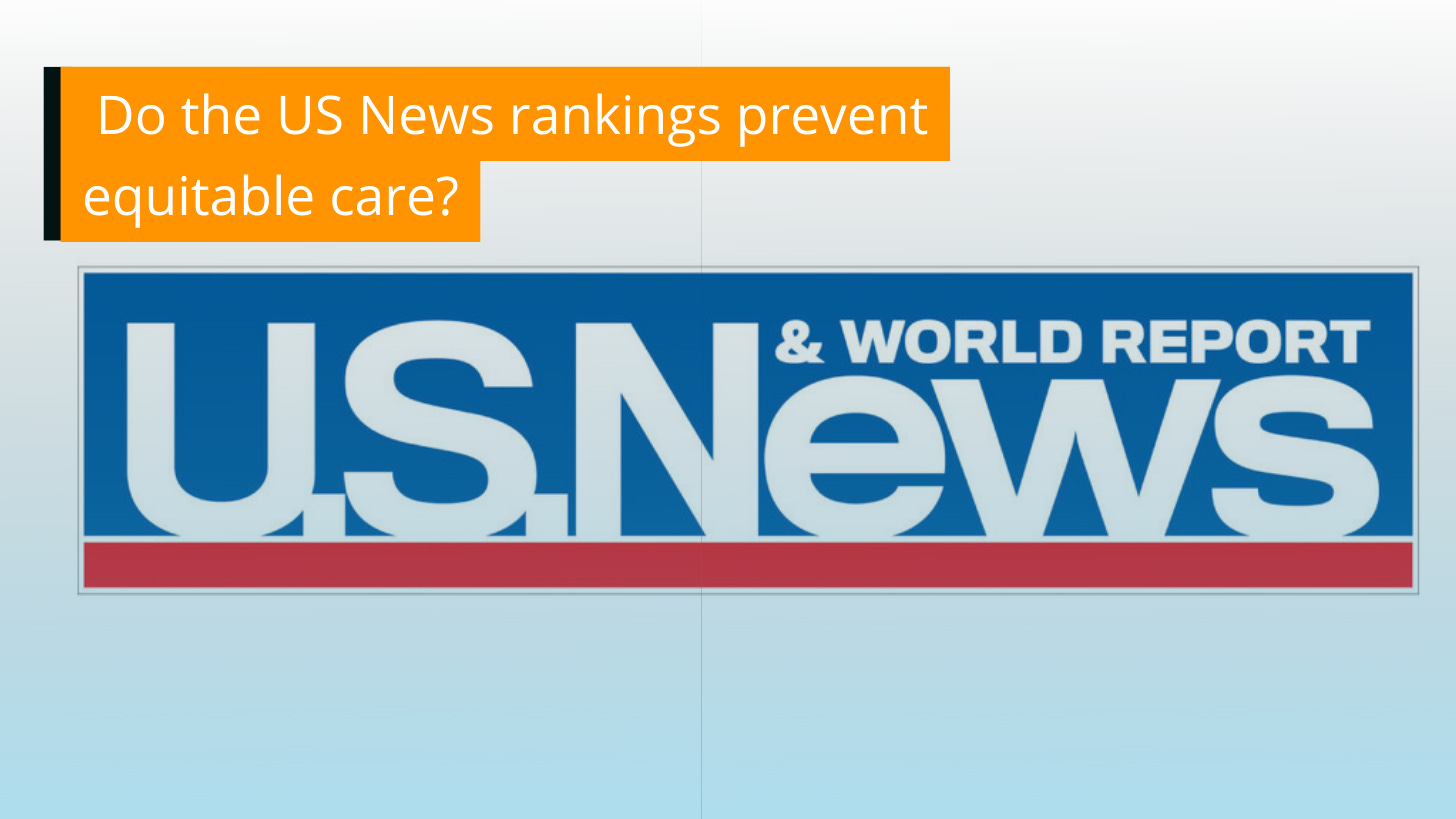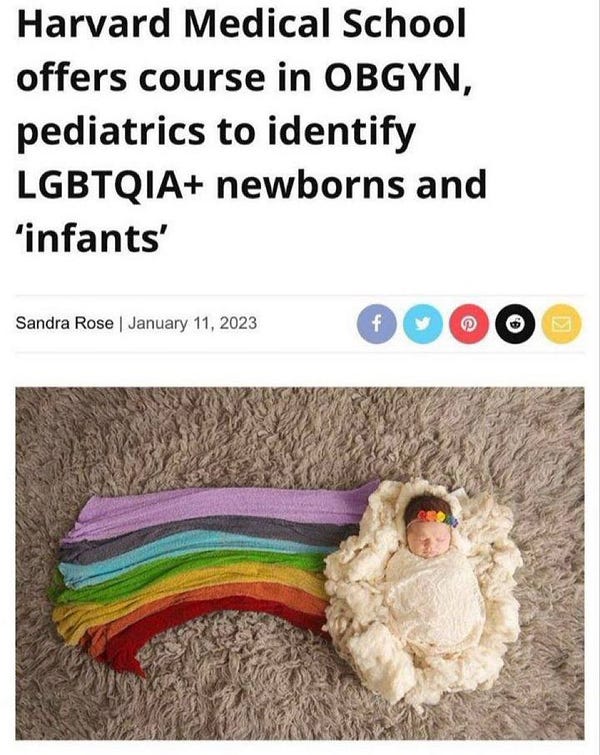Equitable Healthcare & Heart On A Chip On The ISS
Read more about whether US News rankings can prevent equitable healthcare and how research are sending heart models on the ISS to better understand the effects of space on the heart
Do the US News rankings prevent equitable care?

In a recent Health Affairs op-ed, Seattle Children’s Hospital physicians have called on adult and children's hospitals to follow law, medical institutions in withdrawing from the U.S. News & World Report's rankings. These rankings, published since 1983 for higher academia, 1990 for hospitals, have been criticized for undervaluing care rendered to minority patient populations, resulting in underinvestment in important diverse care.
Prestigious medical schools, including Harvard, Stanford, University of Washington, removed themselves from the rankings earliest this year, stating their concerns about an emphasis on prestige and reputation without objective evaluation of education quality. These medical schools claim that the institutions' aspirations of crafting inclusive learning and fostering a diverse, humble atmosphere contrasted with the nature of the US News ranking.
In the Health Affairs op-ed, Madeline Wozniak and Chinenyenwa Mpamaugo pointed out the scoring juxtaposition between cystic fibrosis (CF) and sickle cell disease (SCD), resulting in the undervaluing of minority-impacting conditions. CF, which primarily affects white Americans, is heavily valued in the US News ranking, composing nearly half pulmonology subspecialty points. Meanwhile, there is no hematology section as well as no dedicated SCD subsection, omitting a disease that affects 1 in 365 Black patients but little White patients. Hospitals can only earn a single point for having a formal sickle cell program.
The rankings have recently introduced an equity, diversity, inclusion (EDI) section, yet still lacks measures to directly address quality care for minority patients. Instead of addressing structural racism, the ranking system perpetuates health inequalities, with its prioritization of SCD over CF as only one example.
When the US News prioritizes one disease over another, there are tangible effects on funding. CF receives $2,807 of federal funding per person, while SCD only receives $812 per person, even though it afflicts a larger percent of the population. By increasing its valuation of SCD in scoring mechanisms, US News could sway hospitals toward investing its resources in dedicated SCD care staffing and research funding. Underinvestment in SCD care compared to CF care results in tangible disparities in patient outcomes. In the op-ed, one doctor reported having experienced SCD patients who didn’t want to go into the hospital for fear of not having their experiences fully understood or addressed by staff who are not experts in their condition
Withdrawing from rankings permits hospitals to recalibrate their focus on equitable patient care and community treatment, without being incentivized by trying to jump up the rankings. Ultimately, this could help improve the provision of care for all patients.
Heart on a chip models on the ISS

Researchers from Johns Hopkins and Stanford University are sending heat-on-a-chip models to the International Space Station in order to better understand the long term implications of space in the cardiovascular system. As humans gear up for longer term space travel including eventual trips to the moon and mars, the effects of space on the human body need to be understood before we can take these long trips.
Currently, astronauts live on the ISS for several months at a time and as we gear up for longer trips on the horizon of years or even permanent settlement, we need to know if the human body can even support that and for how long. So far we know that organ systems age faster in space than they do on Earth, about 10 times faster in the case of the cardiovascular system.
The experiments from Johns Hopkins are focused on the effects of microgravity on the mitochondria in heart cells and they are testing certain drugs that might help slow down or prevent the aging process. The Stanford team is trying to see if heart tissue grown in space can be used as a model to better understand heart failure. When in microgravity, muscles tend to lose a lot of their strength since they are not being used to the same level on Earth against gravity. To compensate for this, astronauts typically have several hours of exercise in their schedules to keep their muscles healthy.
This work is a part of a larger initiative to understand the effect of space on different organs using organ-on-a-chip models. These models are able to better simulate physiological conditions by maintaining fluid dynamics and pressure conditions better than what is possible in a simple plate which can not simulate factors like blood flow.
Overall, this is an important area of research for facilitating long term space travel and better understanding what happens to the human body when living in microgravity for extended periods. Another interesting improvement that came about from this work was advancements in automation and scaling things down. The experimental set of these experiments had to be made from the size of a refrigerator to the size of a shoe box to fit on a spacecraft and the experiments are also mostly automated to minimize how often astronauts need to check up on them.
Featured Fake News
Tweets this week have been calling out Harvard Medical School for supposedly teaching gender identity in children.
This is completely false.
The course in reference discusses sex development in children, such as how ovaries develop, correlation between height and the start of puberty, and so on. The focus is on chromosomal and anatomical variation between sexes. It does NOT discuss anything about identifying LGBTQ+ children. We simply don’t know how to do that, so Harvard is certainly NOT teaching a pseudoscientific technique to its medical students.
If you follow the link trail on these tweets you will arrive at a blogpost that cites a New Mail article about Harvard hospitals gender affirming care for youth. All the posts and articles in between are completely made up and this final article is grossly misunderstood.
Gender affirming care in youth is basically just affirming a youth’s self-identity and referring to them with their preferred pronouns. It includes counseling to help them as they go through social transitions with their friends and family and only in very specific cases will it include clinical treatments like hormones or surgeries.
A few months ago, we covered a piece of fake news on the other side of the political spectrum believing that Florida was going to ban gender affirming care outright. Today’s fake news proves that both sides of the political spectrum are misunderstanding many things on this topic. Please be careful about what you read!





